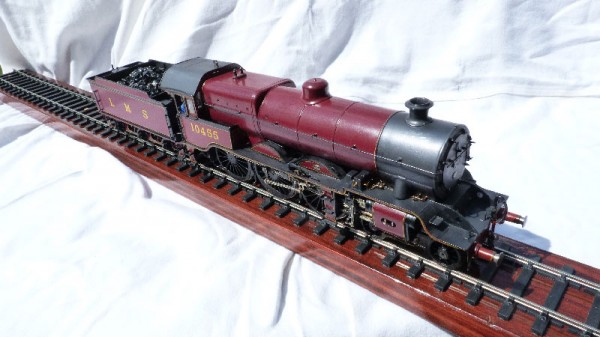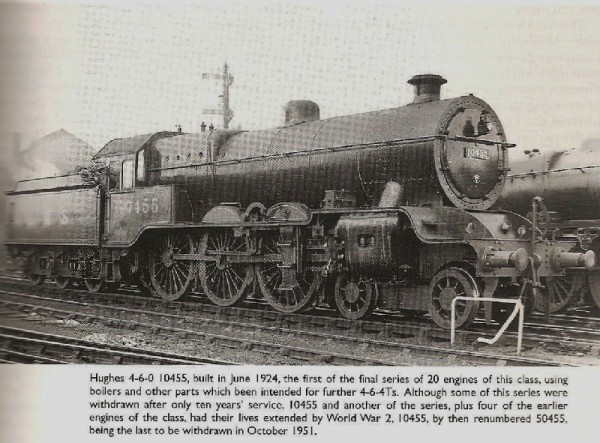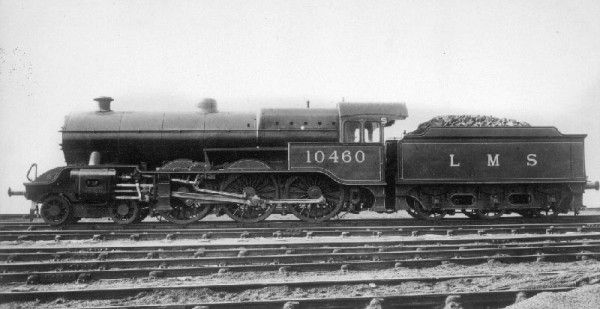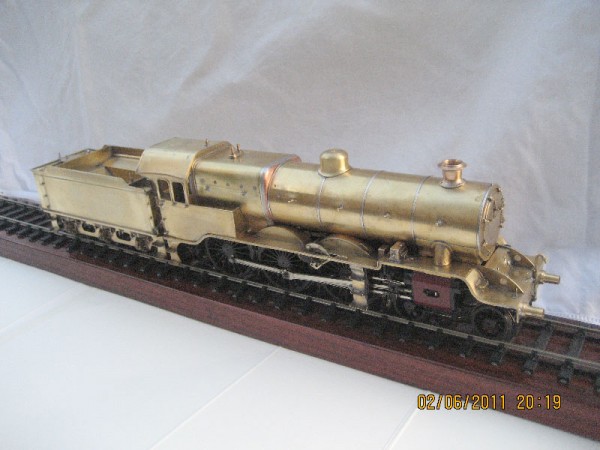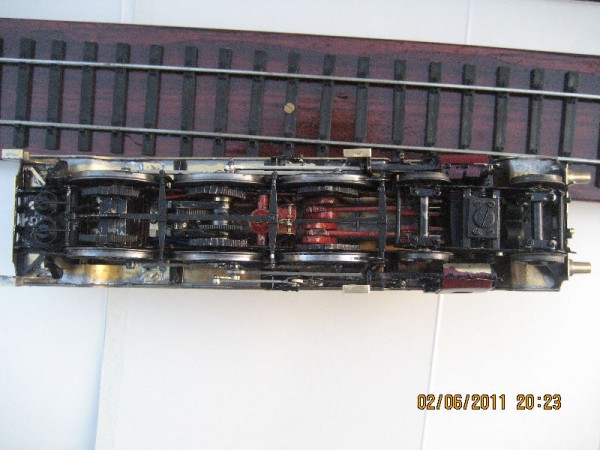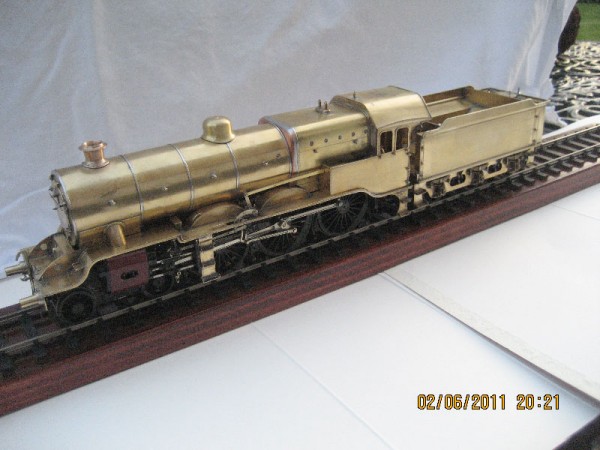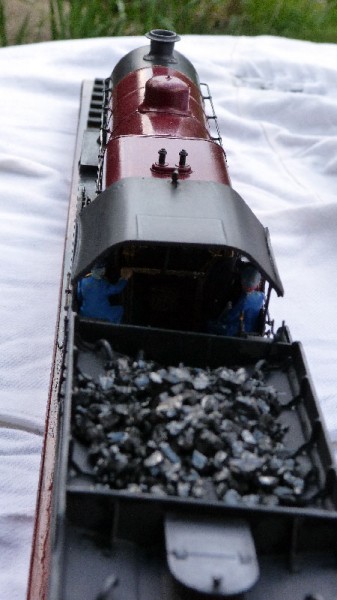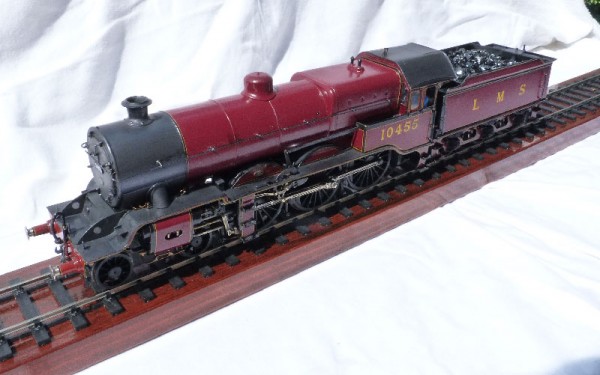Our Trustee and Treasurer John Bentley is a keen railway modeller with a fine collection of locomotives and rolling stock. Here John tells us about his latest project, an LMS “Dreadnought” locomotive….
A model of an LMS “Dreadnought” Locomotive.
The real ones were built in 1924 as a version of a Lancashire and Yorkshire Railway design of 1920. The 1920 type was a rebuild of a 1910 series which had a poor reputation having inside Joy valve gear controlling 2 inside and 2 outside cylinders. Reliability of the 10 built was very bad and the First World War stopped the development of the type. The new version had a better superheated boiler and outside valve gear driving the 4 cylinders with much improved steam passageways. A large 4-6-4 tank engine was also constructed using most of the parts of the tender engine, but the 10 built were considered to be too large for general use and the remaining 20 of the order were converted during build to tender engines. The tank engines had a longer front bogie and these were incorporated in the final 20 tender engines which resulted in a longer sweep of the front plate and a better proportioned look.
The rebuilds were considered at the time to be more superior to other LMS 4-6-0’s and were used on the line between Crewe and Carlisle. Several faults developed and the locos were displaced by the new Royal Scots on the express duty in 1927. The faults were a poor driving wheel bearing design, and lubrication of them. A device to relieve pressure in the main piston proved to allow steam to pass, resulting in high fuel consumption. Piston rings used on the main piston heads and piston valves were very wide, as commonly used at that time, also caused cylinder wear and consequent high steam leakage. One good feature was the layout of the valve gear and this was repeated in the design of the LMS Princess Coronation Class large 4-6-2 engines built from 1937.
When Mr. Stanier became Chief Mechanical Engineer of the LMS in 1931 his Black 5 was so good that all inefficient 4-6-0’s were quickly displaced. The 70 Dreadnoughts were quickly reduced in number such that only one, Number 50445, was painted in British Railways mixed traffic colours (black lined white, grey and red). This engine ran a special train from Blackpool to York in 1951, but a bearing failure during the journey meant a very late return. The engine was not used again. I saw this loco on the outward trip and resolved to model it in that form. I was persuaded to paint the model red before it was completed, the LMS number was 10455 !
The model is a Gauge “O” scale, 7mm to a foot and 32mm track. The ratio was chosen after the First World War as part of a standardisation exercise where various scales were considered and “botched” around to make UK models the same size (not scale) as Continental models.
Rumour suggests that electric motors then used were too big to fit in correctly scaled models ! Track gauge is also inaccurate by using the same gauge as Continental and USA manufacturers. Hornby, Basset Lowke, and Leeds used these ratios with 32 mm, 1.25 inches track, scale track would be 33mm. Hornby Dublo at 4mm to the foot used 16.5mm track the same as Continental and USA scaled at 3.5mm to the foot ! (Correct scale would be 18.8mm.)
The model depicts the engine as in 1938 condition when allocated to Blackpool. The parts were purchased as a kit. The person who designed it was given a good deal of conflicting data, resulting in a several glaring errors. These have been corrected and parts replaced by other items. The chimney and dome were turned to replace the cast ones supplied and other corrections made to the bodywork, so that the model is now accurate. The parts in the kit were lost-wax brass castings and the body and chassis were from photo-etched brass and nickel-silver sheet. The boiler being rolled on miniature pyramid rolls, other bends using bending bars. The boiler was formed around a jig. The parts are soldered together using different melting temperature solders. Inside valve gear has been modelled thanks to obtaining a rare copy of the drawing of the full size layout of the chassis. The gearbox was purchased with helical worm reduction gears and a 12 volt coreless electric motor fitted. Axles are fitted with 3/16th bore ball-bearings. All axles are sprung or beam compensated to help keep rail contact, as electricity is collected from the rails through the driving wheel rims to sprung pickups located behind them and then by flexible wires to the motor.
Paint is Halfords British Leyland Damask Red car paint aerosol can with numbers and some lining from water slide transfers. Other lining was by draughtsman’s spring-bow pen, and lots of practice, using Humbrol enamel paint which was also used for the black parts. The coal is real, retained by UHU glue. Glazing of cab windows uses clear plastic sheet retained by Humbrol clearfix, Final finish was an overspray of satin varnish and some added “dirt”. It took over a year of spare time to finish the model.
During final assembly the model was “run-in” using a rolling road made for the task. This also checks for bits falling off, especially the valve gear ! The model runs smoothly, and has run on Keighley Model Railway Club’s layout hauling a suitable rake of LMS coaches.

